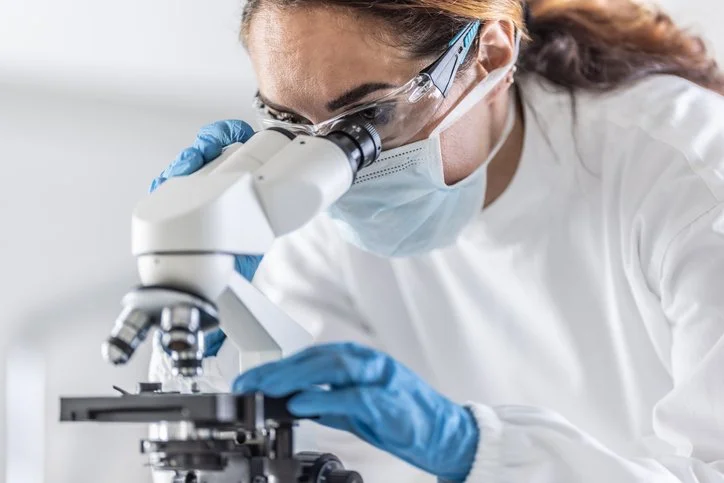Microplastics: The Invisible Threat You Can’t Ignore
By Joy Stephenson-Laws, Holistic Coach, J.D., Founder
Microplastics are tiny plastic fragments smaller than five millimeters, about the size of a sesame seed or smaller.
They originate from larger plastic products that degrade over time due to environmental factors like sunlight, heat, and water, or from the breakdown of plastic during manufacturing and use. Because of their minute size, microplastics easily bypass filtration systems, infiltrating waterways, oceans, soil, and air.
Consequently, they accumulate in marine life, agriculture, and even our drinking water, eventually entering the human food chain.
Real-Life Examples and Surprising Findings
Consider the tea bag you might use daily. A recent study published in the journal Environmental Science & Technology (Hernandez et al., 2019) revealed that steeping a single plastic tea bag at brewing temperature releases approximately 11.6 billion microplastic particles directly into your tea.
Furthermore, bottled water significantly contributes to microplastic ingestion. According to a study published in Communications Biology (Zhang et al., 2024), bottled water is a primary source of microplastics in the human body, with average weekly consumption ranging between 100 to 5,000 mg of plastic per person. Squishy plastic water bottles, especially those left sitting in the sun, can break down more rapidly, releasing greater amounts of microplastics and harmful chemical compounds into the water. This increases the potential health risks associated with consuming beverages from these containers.
Health Implications: A Closer Look
The ingestion of microplastics poses significant risks to human health. Research indicates these particles may trigger systemic inflammation and potentially harm vital organs, particularly the kidneys.
In a critical study on mice published by Communications Biology (Zhang et al., 2024), scientists discovered that ingesting microplastics contaminated with pollutants such as Benzo[a]pyrene (BaP) could disrupt metabolic functions in the kidneys, leading to kidney dysfunction and even cell death.
Since kidneys play a crucial role in filtering blood, regulating essential nutrients, and managing hormones related to blood pressure and bone health, protecting them from damage caused by microplastics is vital.
Proactive Steps to Minimize Microplastic Exposure
While it's challenging to eliminate microplastics entirely, you can substantially reduce your exposure through intentional choices:
Avoid Single-Use Plastics: Switch to reusable water bottles, grocery bags, and utensils.
Clothing Choices: Prefer clothing made from natural fibers like organic cotton or bamboo.
Sustainable Shopping: Choose products from eco-friendly brands that avoid plastics and opt for sustainable, recyclable packaging.
Minimalism Approach: Reduce your consumption overall by investing in quality, durable items rather than disposable ones.
For instance, consider families who switched from plastic-heavy items to more sustainable options. Parents opting for wooden toys instead of numerous plastic ones have reported feeling better about their environmental impact and their children’s health. Similarly, individuals replacing synthetic clothing with natural fibers not only experience reduced microplastic exposure but often discover improved comfort and longevity in their clothing.
Supporting Your Health Against Microplastic Exposure
Adopting a proactive approach also involves boosting your body's resilience against potential microplastic-related inflammation:
Healthy Diet: Emphasize whole, nutrient-rich foods to support overall bodily function.
Regular Exercise and Quality Sleep: These practices help reduce systemic inflammation.
Regular Testing: Undergo comprehensive nutrient and toxin tests. Identifying nutrient deficiencies or toxin accumulation early can help healthcare professionals tailor a specific detoxification and dietary plan to protect your health proactively.
Takeaway: Awareness and Action Are Key
Microplastics represent a subtle but significant threat. However, proactive, informed choices can dramatically reduce exposure and safeguard health. By consciously adjusting lifestyle and consumption habits, you contribute not only to personal well-being but also to broader environmental sustainability.
Together, these small changes can lead to substantial, long-lasting impacts. Start today—your health and the planet will thank you.
Sources:
Hernandez, L. M., et al. (2019). Plastic Teabags Release Billions of Microparticles and Nanoparticles into Tea. Environmental Science & Technology. Retrieved from https://pubs.acs.org/doi/10.1021/acs.est.9b02540
Zhang, Y., et al. (2024). Activation of gut metabolite ACSL4/LPCAT3 by microplastics in drinking water mediates ferroptosis via gut-kidney axis. Communications Biology. Retrieved from https://www.nature.com/articles/s42003-025-07641-8
Enjoy your healthy life!





